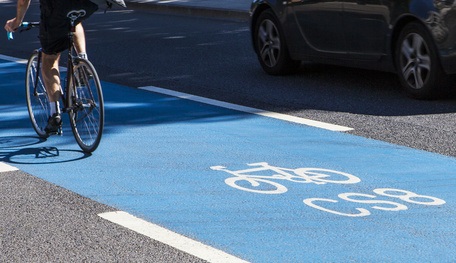London’s new cycle lanes have been causing debate for well over a year now with many complaining that they are not providing a solution for congestion, but are instead making it worse.
The new cycle highways now take up more of the road compared to the previous bicycle lanes – almost a third of them in fact – which has reduced the amount of space for motorists. Increased congestion, traffic and pollution are reasons being put forward by those against the lanes whilst the opposite is being said by those in favour.
So, are these new cycle lanes bad for the environment or something that will help it in the long run? Well, there is no scientific evidence to back up either view as of yet but there are certainly strong arguments from either side of the debate.
Those ‘Against’ London’s New Cycle Lanes
Many of those ‘against’ the new cycle lanes which are taking up a larger section of the roads in the capital are understandably motorists. They claim that due to there being less space for motorists and more space for cyclists, congestion has increased leading to more time being stuck in traffic with their engines running. This in turn, in their opinion, could be leading to an increase in pollution – something that cycle lanes are instead supposed to decrease.
Even Mike Brown, the Commissioner for Transport for London has apologised to motorists for the cycle superhighways, citing that the plan was rushed, ill-thought through and ill-judged.
Common Claims by Critics:
- The new cycle lanes take up too much of the road.
- Less road for cars equals more congestion, idle traffic and therefore pollution.
- The cycle lanes are only used sufficiently during rush hour and are then quiet after.
It would definitely seem that there is an increase in road congestion, but those in favour of cycle lanes state that a big reason for this is an increase in roadworks in the capital. Additionally, they also claim that there is no direct evidence to suggest that pollution has increased due to more congestion when compared to the pollution that has been reduced due there being more cyclists on the road.
Those ‘For’ London’s New Cycle Lanes
On the opposite side of the coin, those that are ‘for’ the new and improved cycle lanes in London cite fewer road deaths, a reduction in congestion and pollution and an increased number of people switching to the healthier mode of transport.
 There are more than 30% more cyclists on the roads compared to ten years ago, which is certainly a sizeable increase. However, those against the new cycle highways in London claim that almost all the cyclists are seen during rush hour with the lanes barely being used in between.
There are more than 30% more cyclists on the roads compared to ten years ago, which is certainly a sizeable increase. However, those against the new cycle highways in London claim that almost all the cyclists are seen during rush hour with the lanes barely being used in between.
That increase in numbers will also have an impact on the amount of pollution being created on the roads as more commuters turn to bicycles instead of cars. Add to that the decrease in road fatalities and the increased health of those getting exercise and you can see that supporters of the new cycle lanes make some good points.
Common Claims by Supporters:
- Numbers of cyclists using these routes has increased by 60%.
- More cyclists on the roads means less pollution.
- A sizeable reduction in cyclist road deaths.
There is no disputing that there are major benefits to getting more people on bikes and less in cars, especially regarding health and pollution – but is it enough? Congestion is still there, traffic is still there and both are at much higher rates than has been seen in many years. The congestion charge might have worked for a while, but that has ultimately failed and now could we see this latest policy fail as well?
So, Who is Right?
It is difficult to tell right now until more figures have been released and scientific evidence is there to back up either view.
It is important to note that these new cycle lanes were implemented by those who had their hearts in the right place and for the right purpose. The issue now is could they now be counterproductive to the goal they are trying to achieve? Could they be contributing to an increase in the very factors that they were designed to reduce?
No matter what your view on these new cycle lanes, there is still something that is plain to see – congestion in the capital is at worse levels than before the congestion charge was brought in. Whether this is an increase in private vehicles, private hire cabs, ‘uber’ cars or vehicles delivering increasing amounts of online shopping or bicycles, is irrelevant.
Congestion is causing pollution which directly affects the health and life expectancy of anyone exposed to it. Something needs to be done for both our sakes and for the sake of the planet.

